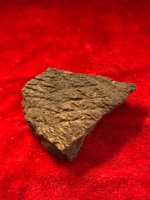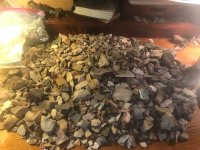Older The Better
Silver Member
- Apr 24, 2017
- 3,399
- 6,694
- Detector(s) used
- Whites Eagle Spectrum
- Primary Interest:
- All Treasure Hunting

I hunt for artifacts regularly In se Kansas, there is only one spot where I find ceramics, which is also the only spot bone is preserved. I believe it is due to the mussel shells also in that spot helping to preserve them.
My question is this, I thought ceramics were fairly durable and should survive burial well, can a fired vessel deteriorate in certain soils? Is it dependent on other factors like temper or climate?
Last edited:
Upvote
0





